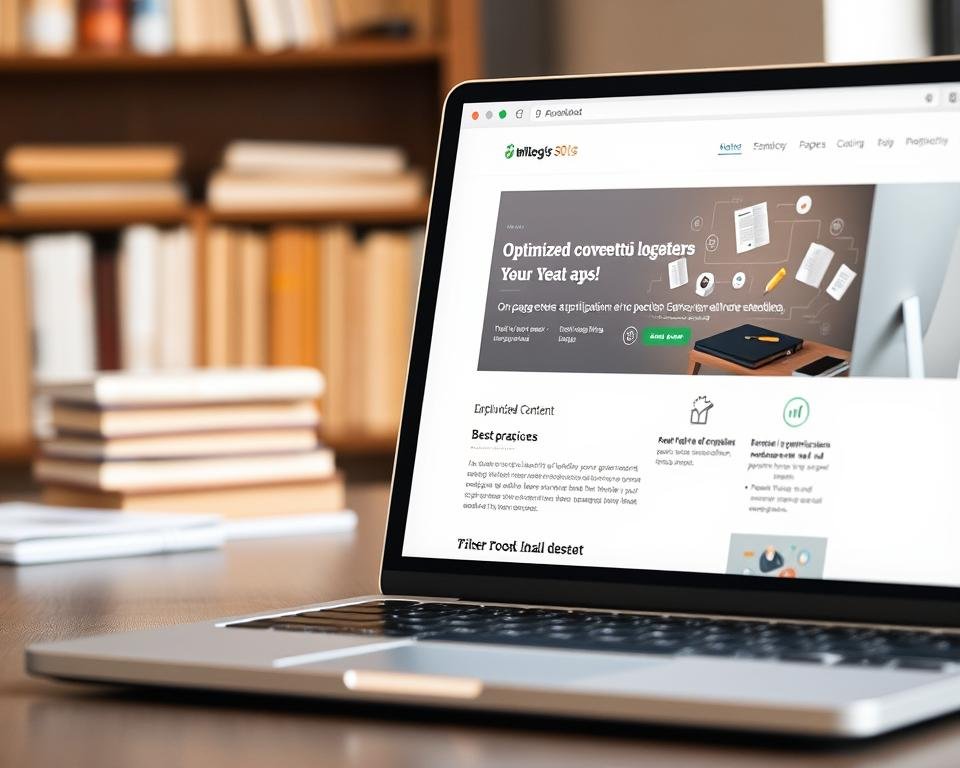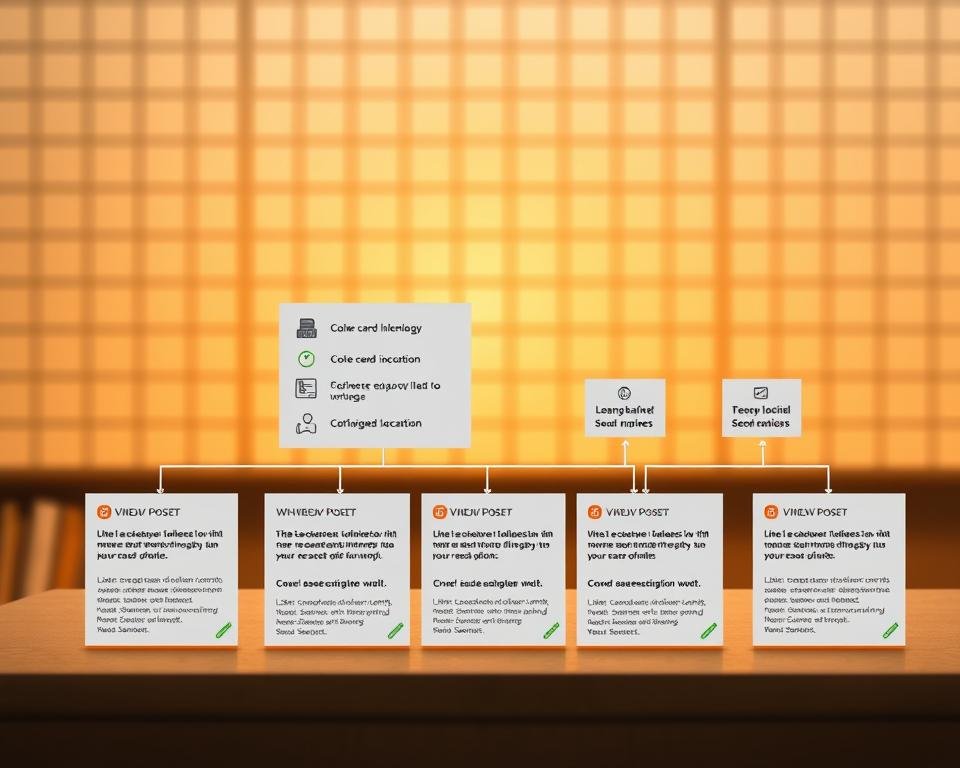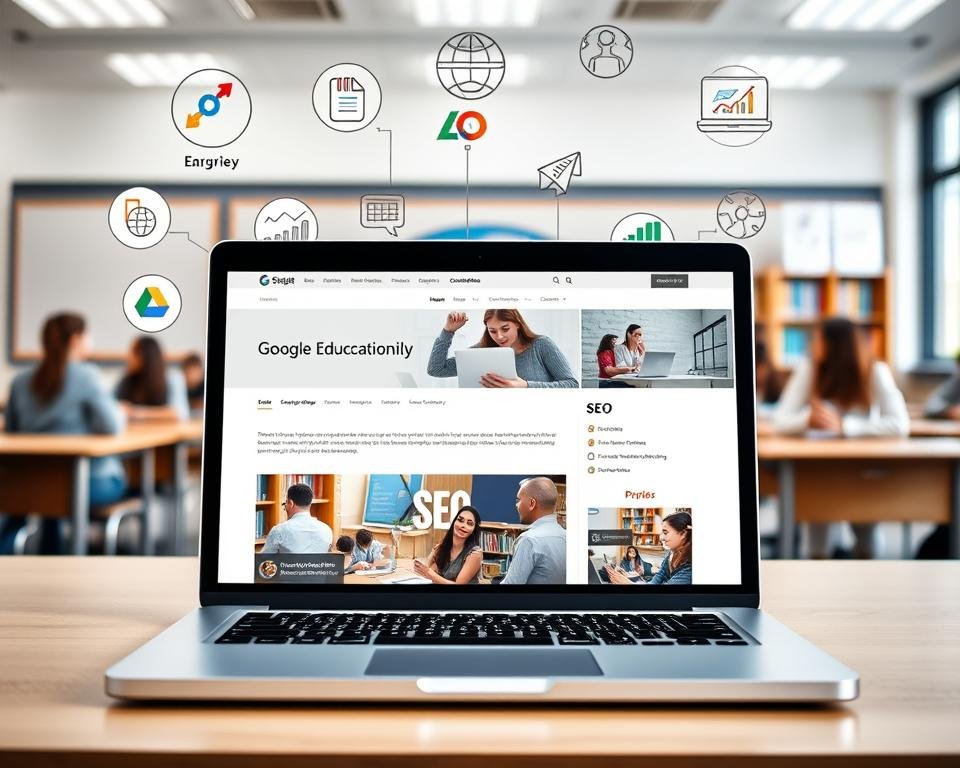As an educational blogger, I know how key it is to reach students and researchers. I do this by optimizing my blog for search engines.
By using the right SEO strategies, I boost my online presence. This attracts more readers to my blog. It also makes me more credible and helps me meet my goals.
Key Takeaways
- Optimize your content for search engines to reach a wider audience.
- Use relevant keywords to improve your blog’s visibility.
- Create high-quality, engaging content that resonates with your readers.
- Regularly update your blog to maintain a strong online presence.
- Use SEO strategies to target specific audiences, such as students and researchers.
Understanding Educational Blog SEO
SEO is key in online education to make blogs more visible. It’s vital for bloggers to know SEO well. This helps them reach their audience better.
First, let’s understand what Educational Blog SEO is. SEO stands for “Search Engine Optimization,” making websites more visible in search engines.
What is Educational Blog SEO?
Educational Blog SEO means making your blog better for search engines. This includes using the right keywords and creating engaging content. It also means optimizing meta tags.
Why SEO Matters for Educational Blogs
SEO is important for educational blogs. It helps them get more visitors and reach their audience. By optimizing their blogs, educators make their content easier to find.
Good SEO also helps bloggers stay ahead. They can create content that meets their audience’s needs. This makes them experts in their field.
Keyword Research Strategies for Educators
Keyword research is key for Educational Blog SEO. It helps educators find the right words to use. This makes their blog easier to find and reach more people.
To do good keyword research, educators need to know the tools and strategies. They should learn about different keywords and how to use them to boost blog SEO.
Tools for Finding the Right Keywords
Many tools can help educators find the best keywords for their blog. Some top ones are:
- Google Keyword Planner: A free tool that helps find relevant keywords and shows search volume and competition.
- Ahrefs: A big SEO tool that offers keyword research, backlink analysis, and content optimization.
- SEMrush: A digital marketing tool that includes keyword research, competitor analysis, and technical SEO audits.
These tools help educators find high-traffic keywords and make their content better.

Long-Tail Versus Short-Tail Keywords
It’s important to know the difference between long-tail and short-tail keywords. Short-tail keywords are short and general. Long-tail keywords are longer and more specific.
“Educational technology” is a short-tail keyword. “Benefits of educational technology in the classroom” is a long-tail keyword. Long-tail keywords have lower search volumes, but they’re less competitive and more focused.
Using both short-tail and long-tail keywords helps educators create a strong keyword strategy. This makes their blog more visible and attracts the right visitors.
Crafting Compelling Content
To boost educational blog traffic growth, focus on creating high-quality, engaging content. This improves reader engagement and boosts your blog’s search engine visibility.
The Importance of Quality Writing
Quality writing is key to a successful educational blog. It means crafting well-researched, informative, and engaging content that speaks to your audience. This way, you can keep readers longer, lower bounce rates, and climb search engine rankings.
Professional SEO for blogs depends on content quality. Search engines favor content that’s both keyword-rich and valuable to readers. So, aim to create content that’s both informative and fun to read.

Engaging Students with Interactive Formats
To engage students and researchers, think carefully about your content. Use interactive formats like quizzes, polls, and infographics to boost engagement.
- Add multimedia like videos and podcasts for different learning styles.
- Make learning fun with interactive tools and quizzes.
- Start discussions on your blog and social media to build a community.
By using these strategies, you can make your blog more engaging and interactive. This helps grow educational blog traffic.
On-Page SEO Best Practices
On-page SEO is key for Educational Blog SEO. It makes web pages rank better in search engines. By using good on-page SEO, educational blogs can get more visitors and reach their audience.
Optimizing Titles and Headings
It’s important to make titles and headings better. Use relevant keywords in your title tags. This helps search engines know what your page is about. Use headings (H1, H2, H3, etc.) to organize your content and show off important keywords.
Here’s how to make titles and headings better:
| Element | Best Practice | Example |
|---|---|---|
| Title Tag | Use relevant keywords | “Educational Blog SEO: Tips and Strategies” |
| Headings | Use headings to structure content | <h1>Educational Blog SEO</h1> |
Meta Descriptions and Their Importance
Meta descriptions give a quick summary of your page’s content. They show up in search engine results. Write compelling meta descriptions that include relevant keywords to get more clicks.
A good meta description is short, informative, and interesting. It should tell the reader what they’ll find on your page.

By following these on-page SEO tips, educational blogs can rank higher, get more visitors, and reach their audience.
Building a Strong Internal Linking Structure
Creating a good internal linking structure helps make your blog better. It makes your blog easier to use and helps with SEO.
Internal linking connects your blog’s articles. It helps readers find more content and search engines to find your site. This is key for educational blogs to organize content well.

Benefits of Internal Links
Internal links make your blog better in many ways. They improve user experience, keep readers engaged, and help with SEO. By linking to other articles, you:
- Help readers find more content.
- Keep readers on your site longer.
- Help search engines understand your site better.
A good internal linking plan can make your blog more visible and trusted.
Effective Internal Link Strategies
Here are some tips for better internal linking:
| Strategy | Description | Benefits |
|---|---|---|
| Use descriptive anchor text | Use text that tells what the link is about instead of “click here.” | It’s better for users and SEO. |
| Link to relevant content | Make sure the link is related to the current page and useful to readers. | It keeps readers interested and lowers bounce rates. |
| Avoid over-linking | Don’t put too many links on a page. Only use the most important ones. | It makes your site easier to read and use. |
Using these tips can help you build a strong internal linking structure. It supports your educational content marketing and boosts your blog’s SEO.
Leveraging Social Media for Reach
In today’s world, social media is key for sharing educational content. It helps your blog reach more people. By using social media well, you can get more visitors to your blog.

Which Platforms to Use
Each social media site targets different groups. For educational blogs, Twitter, Facebook, and LinkedIn are great. Twitter is good for short updates. Facebook is for longer posts and building a community. LinkedIn is best for professionals and academics.
Choosing the right platform depends on who you want to reach. For example, if your blog is about higher education, LinkedIn is a good choice.
Best Practices for Sharing Educational Content
Here are some tips for sharing educational content on social media:
- Make your posts short and interesting.
- Use hashtags to get more views.
- Add images or videos to make your posts stand out.
- Ask questions or ask for feedback to get people talking.
- Share content from others to build a community.
Following these tips can help your blog get more attention. The secret to good social media marketing is to be regular and engage with your audience.
Monitoring and Analyzing Performance
Knowing how well your educational blog does is key to making your SEO better. In the world of Educational Blog SEO, watching and checking how things go is very important. It’s not just extra work, but a main part of doing well with SEO.
To keep track and check how things are going, I use a mix of tools and metrics. These tools and metrics give me insights into my blog’s visitors, how they interact, and its SEO health. I use special tools to see how well my SEO is doing and know which metrics are most important.
Tools for Tracking SEO Success
There are many tools to help track how well your SEO is doing. Each tool gives different insights into how your blog is doing. Some of the best tools include:
- Google Analytics: Gives detailed info on website visitors, like how many come, how long they stay, and if they leave quickly.
- SEMrush: Has a wide range of SEO tools, like checking keywords, tracking backlinks, and looking at competitors.
- Ahrefs: Is great for checking backlinks and finding keywords.
These tools help me see where I can get better and check if my SEO plans are working.
Understanding Metrics that Matter
Having the right tools is important, but knowing what they show is even more so. Important metrics to watch include:
| Metric | Description | Importance |
|---|---|---|
| Organic Traffic | The number of visitors coming from search engines. | High |
| Bounce Rate | The percentage of visitors who leave without doing anything. | Medium |
| Average Session Duration | The average time visitors spend on the site. | Medium |
| Conversion Rate | The percentage of visitors who do what you want them to. | High |
By focusing on these metrics and using the right tools, I can make my SEO better. This helps grow educational blog traffic growth and improve my professional SEO for blogs.

Keeping an eye on things and analyzing helps make choices based on data. This makes sure SEO efforts match the blog’s goals and plans.
Enhancing User Experience and Engagement
A good user experience is key to keeping readers on educational blogs. As educators and researchers, we must focus on our audience’s needs. This ensures our content is easy to access and fun to read.
Importance of Mobile Optimization
Most people use the internet on their phones. So, making your educational blog mobile-friendly is a must. A site that works well on all devices makes it easy for readers to explore.
- Responsive design that adapts to different screen sizes
- Fast loading speeds to reduce bounce rates
- Easy-to-use navigation and clear typography
By using these mobile optimization tips, you can make your blog better for users. This keeps your readers interested and coming back for more.

Creating a Readable and Accessible Blog
Making your blog easy to read and accessible is vital. Use simple language, break up content, and make sure it’s for everyone. This means your site is open to all readers, including those with disabilities.
Key strategies include:
- Using headings and subheadings to structure your content
- Incorporating images and videos to break up text
- Ensuring that your site follows accessibility guidelines
By following these tips, you can make your educational blog both useful and fun. This improves the user experience and keeps readers engaged.
Future Trends in Educational Blog SEO
As we move forward in Educational Blog SEO, staying ahead is key. We must keep up with new trends. This helps us improve our SEO strategies to attract more visitors.
Adapting to Voice Search
Voice search is changing how we use search engines. With more voice assistants, making our blogs voice-friendly is vital. We should use natural speech and long-tail keywords.
The Impact of Video Content
Video content is becoming more popular in education. It greatly affects our SEO strategies. Adding quality videos can make our blogs more engaging and visible.
As video content grows, we need to optimize video details for better SEO. This way, our educational blogs can stay competitive and reach our audience.
